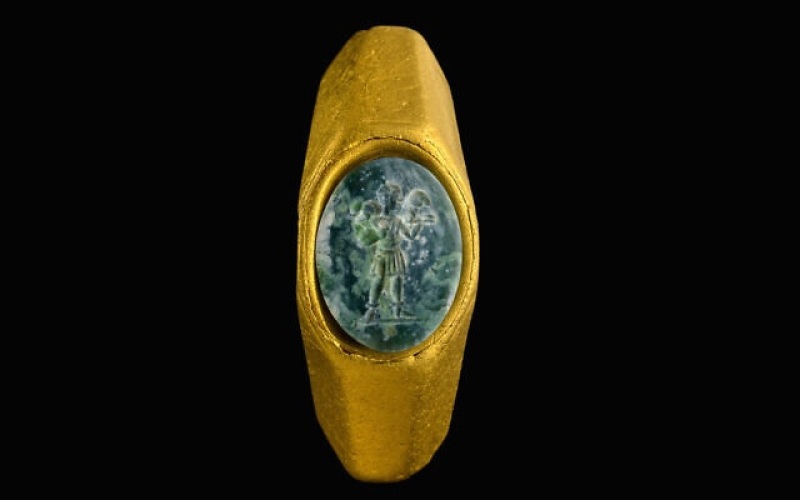
A team of marine archeologists have found several amazing artifacts after an expedition into the coast of Caesarea, Israel. The Marine Archeology Unit of the Israel Antiquities Authority found several items in two ancient shipwrecks, including a gold ring featuring a green gemstone engraved with the figure of the Good Shepherd carrying a sheep or a ram on his shoulders, as well as Roman-era silver and bronze coins and figurines.
Jacob Sharvit and Dror Planer of the IAA's Marine Archaeology Unit explained that the two separate shipwrecks, which were 1,000 years apart, were probably "anchored nearby and were wrecked by a storm," the Times of Israel reported. Archeologists found a thick gold ring with an inlaid green gemstone that depicted a man with a ram or sheep on his shoulders.
The IAA noted that the "Good Shepherd" was "one of the earliest and oldest images used in Christianity for symbolizing Jesus; it represents Jesus as humanity's compassionate shepherd, extending his benevolence to his flock of believers and all mankind."
The owner of the ring and other discovered artifacts was probably an early Christian aboard a ship that sank as it was traveling into the port of Caesarea, where the earliest Christian communities were located. IAA's coin department curator Helena Sokolov said that the "Good Shepherd" ring was a rare find, the Christian Post reported.
"This was a period when Christianity was just in its beginning, but definitely growing and developing, especially in mixed cities like Caesarea," Sokolov told AFP. She added that the ring's small size may indicate that it belonged to a woman.
The Daily Mail reported that during the ring's era, Christianity was being practiced in "underground" forums but the Roman Empire was "relatively tolerant of new forms of worship including around Jesus," which is why it made sense that a wealthy person in the Roman Empire could wear such a ring depicting the "Good Shepherd."
But the "Good Shepherd" ring was not the only Christian-related finding in the shipwrecks. Archeologists also found a red gemstone for a setting in a "gemma" ring, featuring a carving that shows a lyre, which is called "Kinor David" or David's harp in Jewish tradition.
Other discoveries include hundreds of silver and bronze Roman coins from the mid-third century CE and hundreds of silver coins dating back to the Mamluk period in the 14th century. Among the historic discoveries were a bronze eagle figurine, which symbolized Roman rule and a figurine of a Roman pantomimus in a comic mask. Marine archeologists also found a collection of bronze bells that were believed to be used to ward off evil spirits. Pottery vessels, an inkwell, and several metal items from the hull of a wooden ship that implied it crashed were all also found.
IAA director Eli Eskozido remarked, "Israel's coasts are rich in sites and finds that are immensely important national and international cultural heritage assets. The discovery and documentation of artifacts at their original find spot has tremendous archeological importance and sometimes even a small find leads to a great discovery."





















